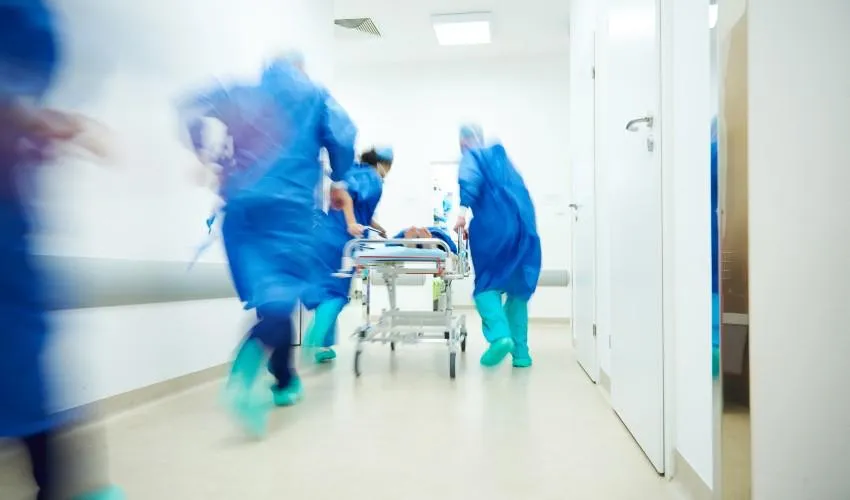
OASI Report: Healthcare Moving at the Speed of Light
The Italian National Healthcare System (Sistema Sanitario Nazionale, SSN) has gone through more changes at a frantic pace from February 2020 to the present than at any other time in its existence. According to the 2021 OASI Report (Osservatorio sulle Aziende e sul Sistema Sanitario Italiano - Observatory on the Italian Healthcare System), presented this morning at SDA Bocconi School of Management, from February 2020 four "eras" can be distinguished, characterized by different goals and organizational methods.
The SSN entered the pandemic when it was still in the era of spending restraint. "In February 2020, our SSN recorded one of the lowest per capita health expenditures in Western Europe, with a growth rate of public health spending close to zero if adjusted for inflation and with regional deficits zeroed out or greatly reduced," recalled Francesco Longo, Scientific Head of the Report, a Bocconi professor and researcher at CERGAS, the Centre for Research on Health and Social Care Management.
In the second era, put in motion in March 2020, when the fight against the pandemic became the paramount goal, spending constraints dissolved, so much so that in 2020 health spending increased by about €6bln (+5%) and the system discovered previously unexplored flexibility. "During 2020 and early 2021, the percentage of beds dedicated to COVID fluctuated accordion-like from 5% to 80%. Flexibility also affected the profiles of the recruited staff, with the consistent use of retired and non-specialized physicians; the contractual forms, with a prevalence of fixed-term and freelance; and the organizational methods," recalled Alberto Ricci, Coordinator of the OASI Report.
The progressive transformation of COVID from an emergency into an endemic and sufficiently controlled reality led to the third era. With the decrease in hospital pressure came the need to make up for the enormous delay in the delivery of services for non-COVID patients, in every setting. The culture of flexibility experienced in the COVID period, along with an extraordinary share of additional resources allocated by the government to catch up on waiting lists were important facilitating elements. Another factor was increased staffing.
The fourth epoch, in full swing, is that of the construction of a portfolio of projects to be financed by the Next generation EU program. Prospective work has been and is being done, with the goal of impacting on the services actually delivered in 3-5 years. This is the opposite horizon from the acute phase of the epidemic, during which only immediate urgency was considered, with time horizons of just a few days.
"The biggest mistake," Ricci said, "would be to try to enhance all the services in the same way with no change in the model, trusting in continued growth in resources." Actually, the resources made available to healthcare are expected to reach an all-time high of 129bln this year, and then decrease very slowly. Italy has reached 156% of public debt to GDP and the need to make up for it will most likely prevent Italy from aligning its healthcare spending (expected to be around 6.5% of GDP over the next few years) with that of countries such as France and Germany, historically around 9%.
Once the emergency phase is over, moreover, health needs, dictated by demographic and epidemiological changes, will continue to evolve according to the same trend shown in recent years. ISTAT, the Italian Statistics Institute, estimates that by 2040 the over-65 population will reach 19mln, equal to 32% of total residents (59.3mln). "The issues to face will be chronicity, non-self-sufficiency, rehabilitation, frail patients," summarizes Ricci, "with the potential complication of the effects of the so-called long COVID, still difficult to assess."
Faced with the "inevitable constraints on resources, however,", concluded Longo, "the path should not be that of rationing, but of rationalizing. The challenge will be to replace the cuts with processes of reallocation, job reorganization and service redesign. The ultimate motivation is to face - at parity of available resources - the demand for health care that not only increases but changes along with the demographic and social context."
The role of the managers of the healthcare providers will be very important, as they will have to work on the territory, understanding from time to time how to implement the regional guidelines. Compared to the recent past, in addition to their technical skills and internal leadership, their role as stakeholder managers will be more relevant with respect to the demands of politics and local players (municipalities, professional associations and unions, third sector).
The presentation of the Report took place during a hybrid event organized by CERGAS, the Center for Research on Health and Social Care Management, with the unconditional contribution of Medtronic, Viatris and Bristol Myers Squibb. Unconditionally contributing to the realization of the Report were also Janssen Cilag, Assolombarda, Confindustria Lombardia Sanità Servizi, AIOP Lombardia, Fondazione Sanità Futura.
Related content![]()